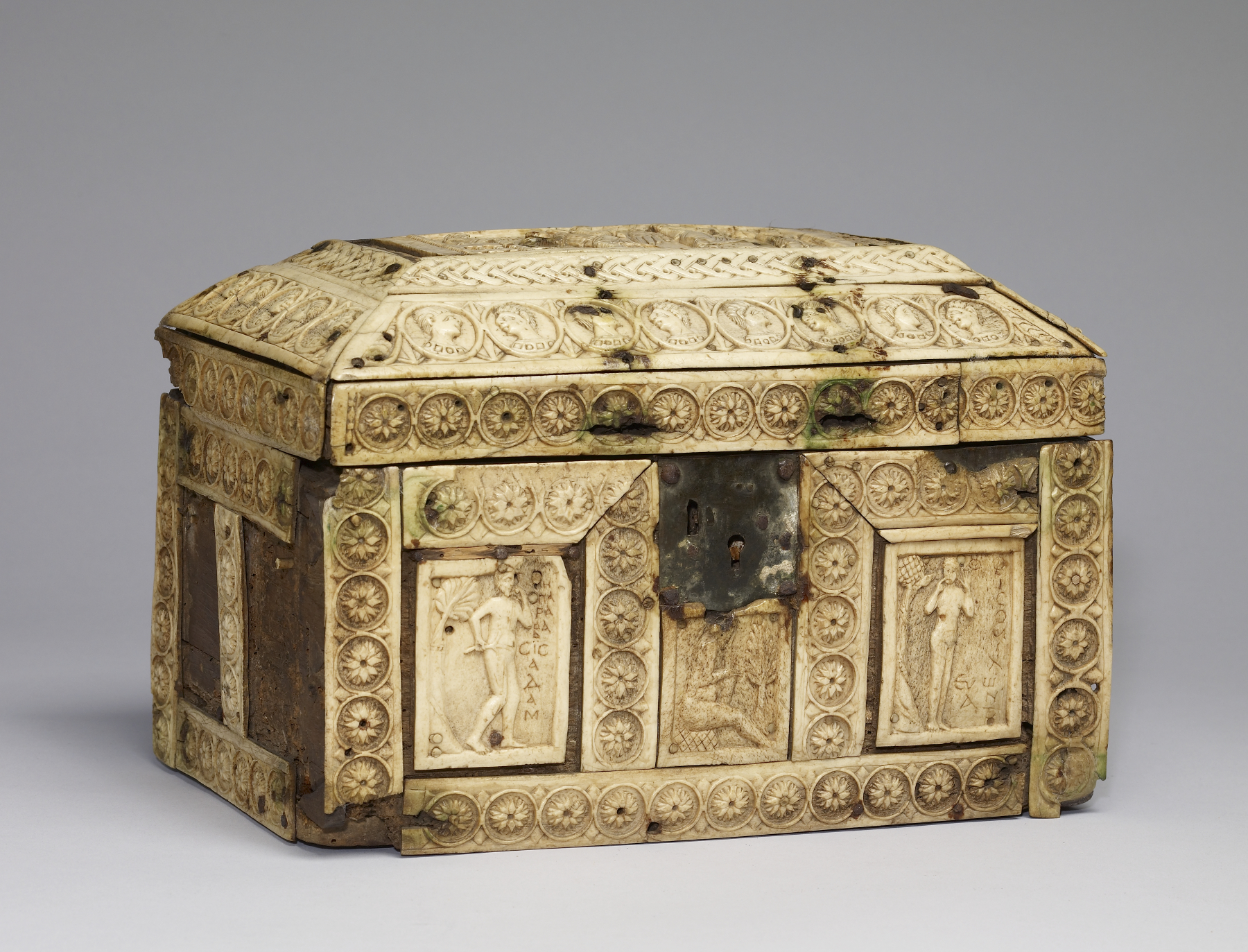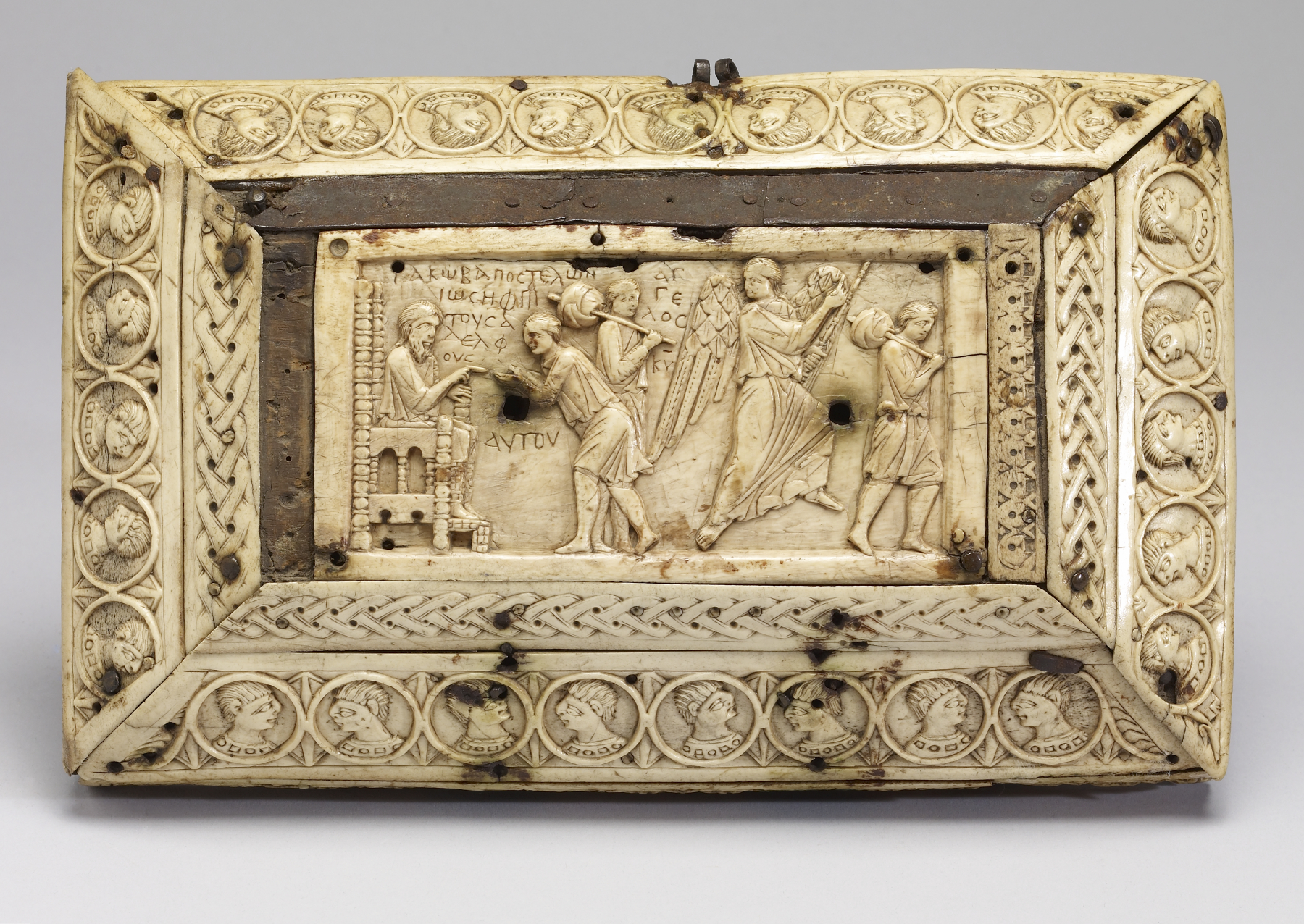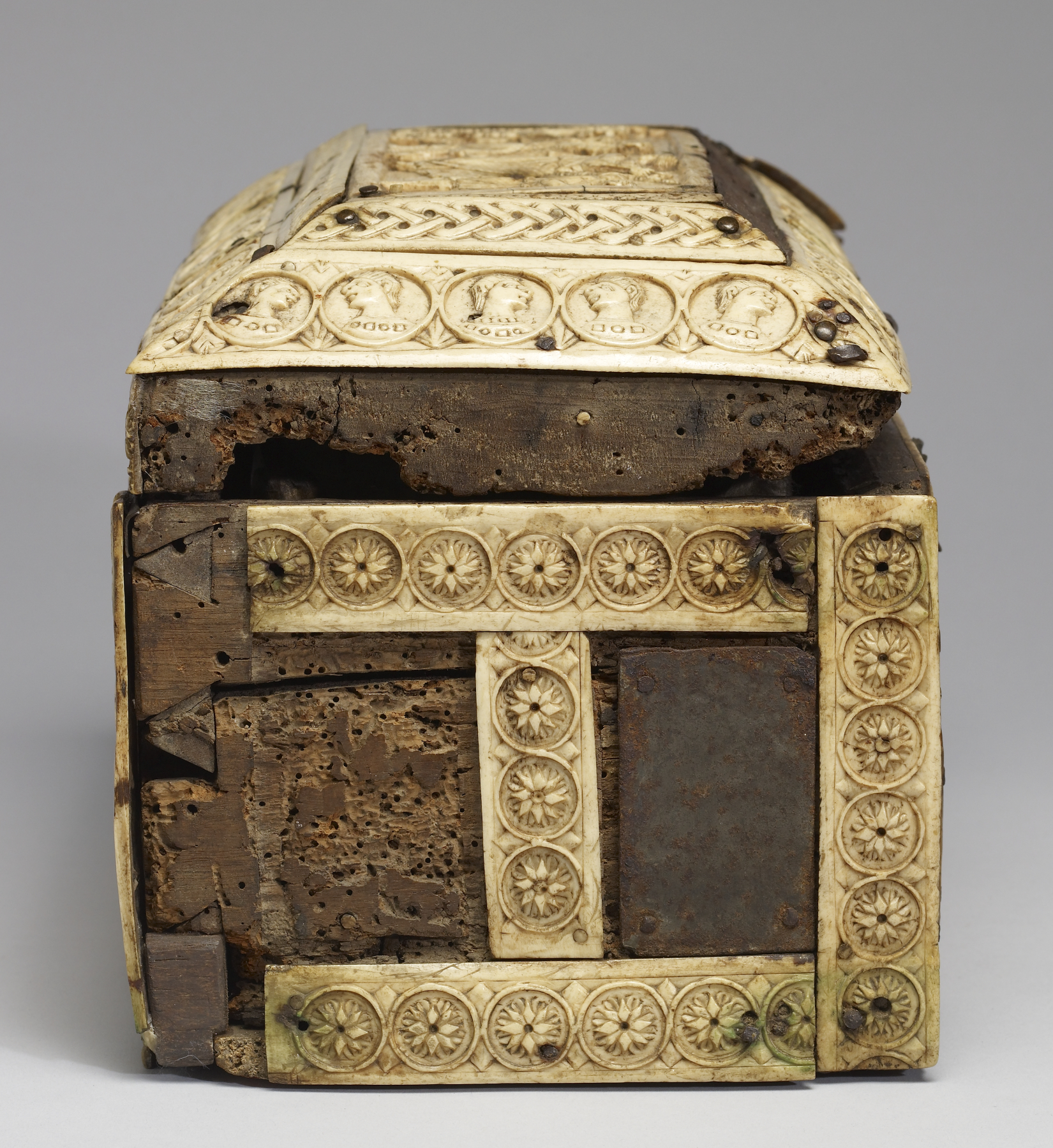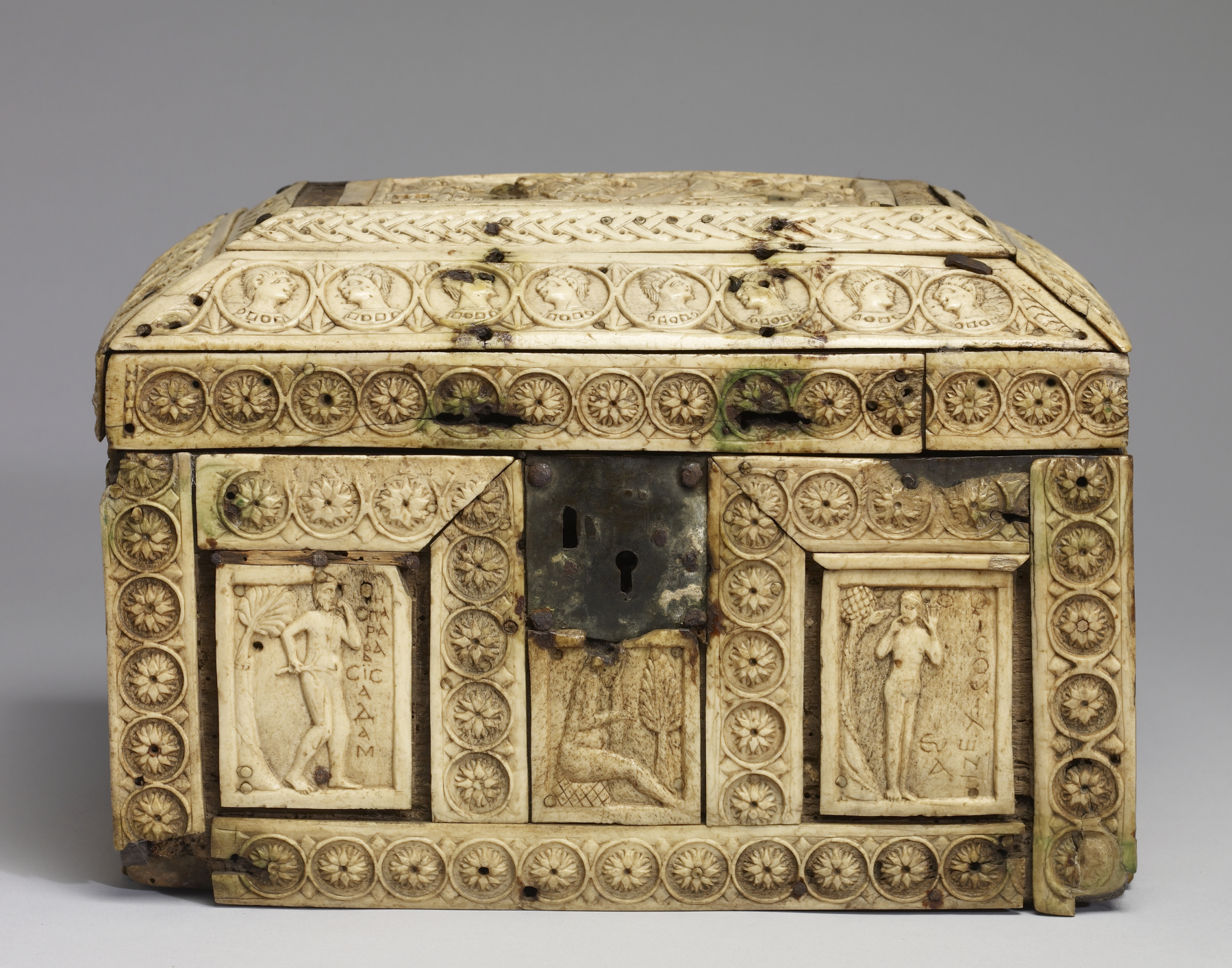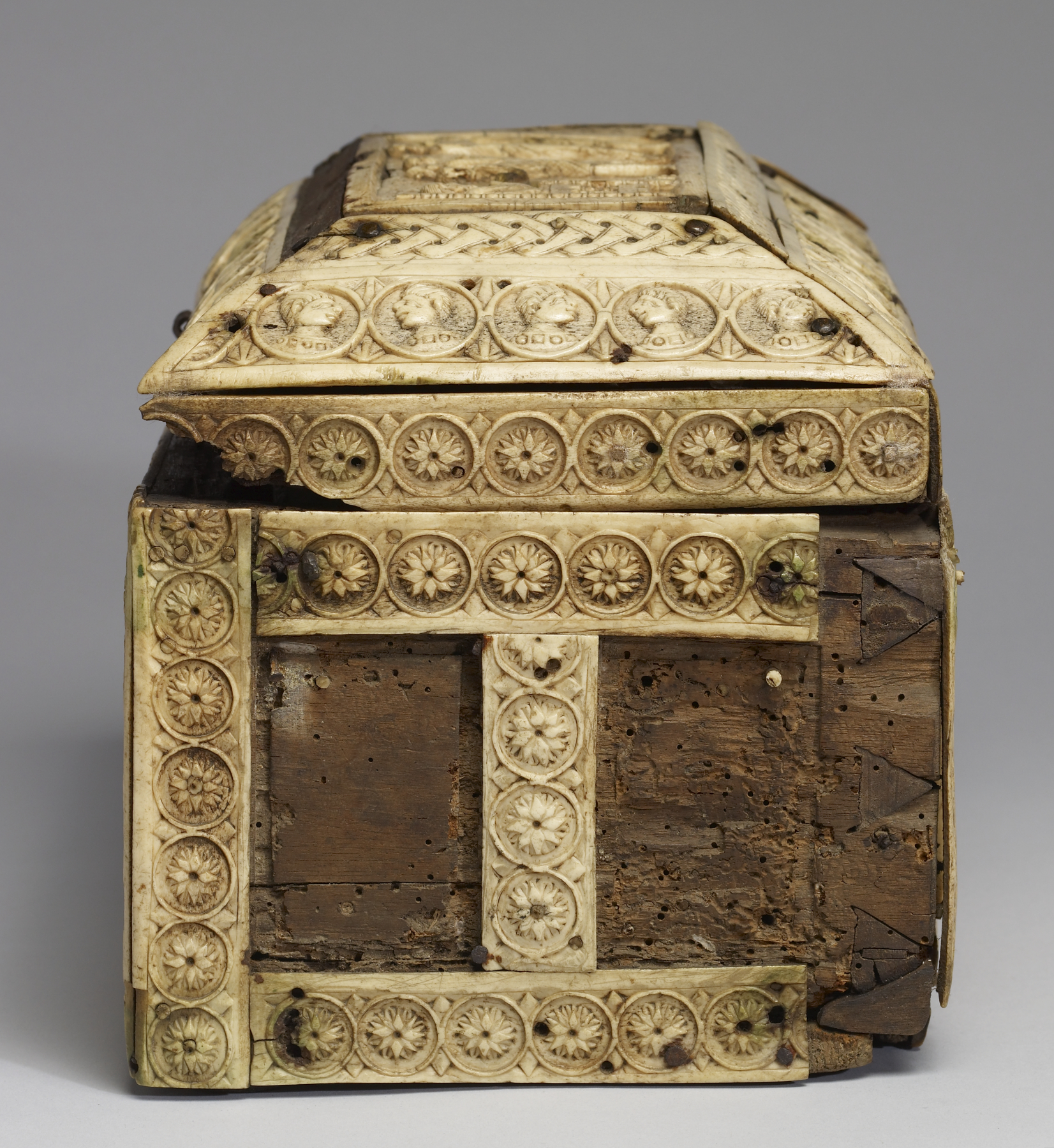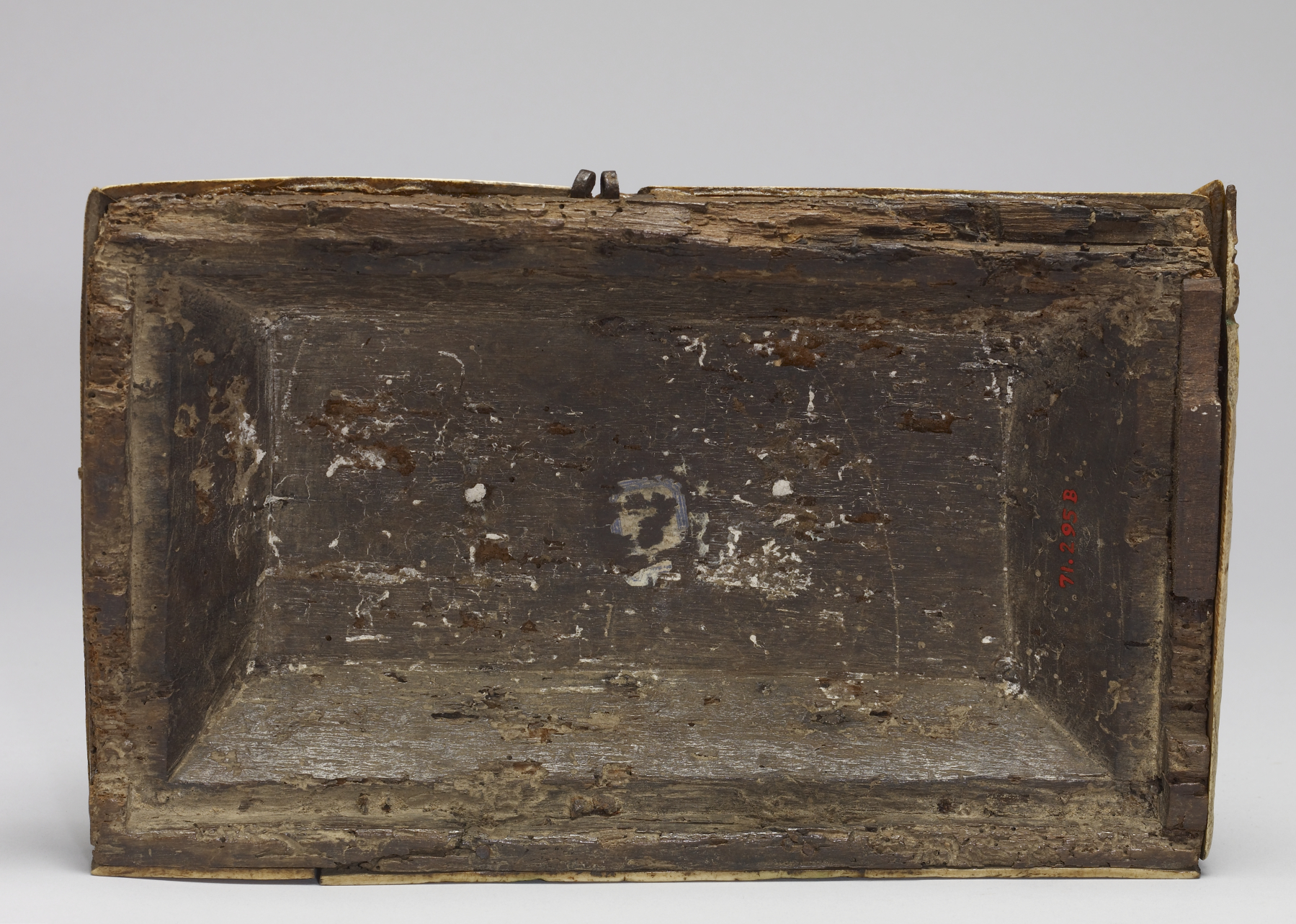Box with Scenes from the Fall of Adam and Eve and the Story of Joseph
(Byzantium and Early Russia)
The front of this casket depicts the Fall of Adam and the Temptation of Eve, flanking the Sorrowing Adam below the lockplate. A fourth plaque on the back of the casket portrays Adam hiding behind a tree and covering his nudity. The large rectangular plaque set into the casket's lid shows the Old Testament patriarch Jacob ordering his son Joseph to follow his brothers, and the Angel of the Lord guiding his way. These Old Testament images must have been intened as moral examples for the box's owner. It was probably used in a private home for the safekeeping of valuables.
In Constantinople, where urban life, especially in the middle Byzantine period (843-1204) surpassed that of any western center, luxury items such as boxes made of ivory and bone were in great demand and produced serially. A number of details point toward such a system of manufacture: many extant boxes have similar dimensions, and often the borders were cut to size and used as fillers. The plaque on the lid of this box with biblical scenes is smaller than the allotted space, a sign that it was not made to measure. Likewise, the presence of peg holes prepared but not drilled through (like those in the upper left border) indicates that the plaque was part of a stockpile and not custom made. These techniques allowed workshops to produce more affordable wares, thus meeting the needs of a larger market. The wealthier patrons might order a custom-made box covered in ivory plaques, consumers of more modest means could purchase a box decorated with the plaques and strips of carved bone that the workshop kept in stock.
Inscription
Provenance
Provenance (from the French provenir, 'to come from/forth') is the chronology of the ownership, custody, or location of a historical object.
Henry Walters, Baltimore, 1926, by purchase; Walters Art Museum, 1931, by bequest.
Exhibitions
| 2016 | Waste Not: The Art of Medieval Recycling. |
| 1947 | Early Christian and Byzantine Art. Baltimore Museum of Art, Baltimore. |
Geographies
Turkey, Istanbul (Constantinople) (Place of Origin)
Measurements
H: 7 3/8 x W: 10 15/16 x D: 7 1/16 in. (18.7 x 27.8 x 17.9 cm)
Credit Line
Acquired by Henry Walters, 1926
Location in Museum
Centre Street: Third Floor: Byzantine, Russian, and Ethiopian Icons
Accession Number
In libraries, galleries, museums, and archives, an accession number is a unique identifier assigned to each object in the collection.
In libraries, galleries, museums, and archives, an accession number is a unique identifier assigned to each object in the collection.
71.295

